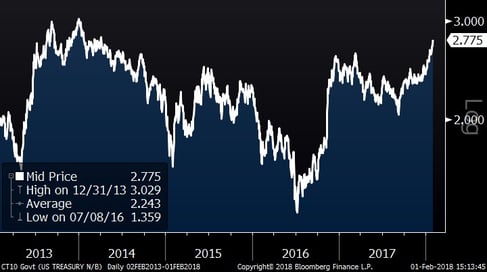SUPERHEROES SWOOP TO IN SAVE HEALTH CARE
On Tuesday, Jamie Dimon, Warren Buffett and Jeff Bezos announced that they are forming a new company, “free from profit making incentives and constraints”, to address the healthcare costs of their employees and “potentially all Americans”. This news pushed most healthcare stocks downward and sparked a lot of buzz on what exactly this could mean. The reactions varied from dismissive to “wow”, but in my opinion, this is another example of the biggest disruptive forces identifying a weakness and using their skills and means to try to solve a problem. I certainly would not want to bet against a trio of Jamie Dimon, Jeff Bezos and Warren Buffett – it is like entering Lebron James, Michael Jordan and Wilt Chamberlain in a three-on-three basketball tournament. They referred to healthcare costs as being a “growing tapeworm” feeding on the U.S. economy. Many are excited about this trio attacking the tapeworm versus a group of bureaucrats. MORE: CEO Perspective On Healthcare Announcement
THE NEW ALGORITHM OF VALUE
Many traditionally trained financial analysts scratch their heads over how some tech firms can have such high valuations. Scott Galloway discusses this as “The New Algorithm of Value” in The Four. Essentially, one reason Amazon, Facebook, Apple and Google are worth so much is because they have not only drawn the biggest reach, but they also have developed incredible intelligence from their users through their behavior analytics data capturing abilities. It is no coincidence that the market is rewarding the companies at the top right of the chart below from L2:

INTEREST RATES
Most market pundits believe that interest rates have finally (they have wrongly been guessing this for several years now) reached their lows after a 35-year downtrend. As you can see in the chart below, the 10-year U.S. Treasury rate has increased from 1.35% to almost 2.7% in the past year and a half. If rates have indeed entered a new longer-term uptrend, this would be a very different environment than we have experienced for a long time. So far this year, the effects of this can be seen in fixed-income investments which have been generally weak. Dividend-paying stocks have been relatively weak, as well. Although most believe rising rates would be bad for the stock market, there are some who argue that higher rates, if they are not moving up too quickly, might add to the strength of the stock market due to a reallocation from bonds to stocks. Related: Fed Leaves Rates Unchanged, But Inflation Rising This Year
10 – Year U.S Treasury Rate (5 years)

BLACK GOLD
Don’t look now, but crude oil prices have risen from a low of $26 two years ago to $66 today (chart below). The current theory on oil prices is that there is a new paradigm – new technologies have enabled companies to efficiently produce oil from fracking and the ease of “turning on the spigot” should mean that supply can easily come on-line when prices rise. If this “lower for longer” theory holds true, then oil prices should become less volatile than in the past and upside spikes should remain muted…time will tell. MORE: U.S. Oil Production Tops 10 Million Barrels For First Time Since 1970



